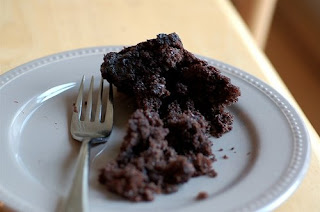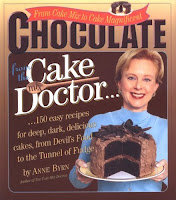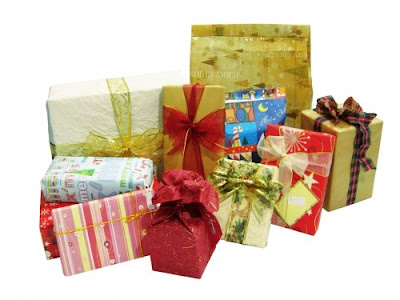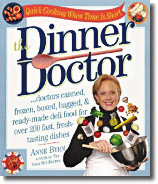
Have you every read anything by Joel Salatin?
One of the things we love about Joel Salatin's books are his understanding of the systems God has built into creation. Not only does he understand plant and animal life systems designed by our Creator, but he farms in harmony with those systems with such precision that his yields and profitability far outweigh conventional practices.
His books are written in a simple style at times almost like a journal, but they are chock full of wisdom and experience from a seasoned farmer who knows there are no short cuts to good quality homegrown food. He is not afraid to tell you his mistakes and is meticulous about documenting his procedures.
Here are a few excerpts:
"The more we study the advantages of seasonal production, the more satisfied we are that we have made the right decision not to be suckered into the demands of year-round production. Nature provides seasons for a reason. Each has its assets and liabilities. Producing in sync with the season provides the greatest profit."
"When we look at the big picture, the cycles of nature are here for a reason. As we begin tapping into them, and using them for our benefit, positives occur in many areas: social, economic and physical. To fully utilize the season requires forethought, discipline , and seasonal hard work. Solomon pointed out that there is a season to plant and harvest. As soon as we refuse to plant or refuse to harvest in season we pay a price."
from Pastured Poultry Profits by Joel Salatin
Wow, what a breath of fresh air. His philosophy seems to be lets look at the farm through God's eyes and see what we can do to make it run as efficiently as it can. End result- better food; better production models.
Even though we don't farm on nearly the scale as he does much of his wisdom can be applied to the small cottage farm. And even if you don't farm at all you can learn a ton from reading his books.
Friday, June 27, 2008
Now This Guy Understands A Few Things
Thursday, June 26, 2008
Good to the Last Crumb...

German Chocolate Pound Cake
1 package (18.25 ounces) plain German chocolate cake mix
1 package (3.9 ounces) chocolate fudge instant pudding mix
1 cup sour cream
1/2 cup water
1/2 cup vegetable oil
4 large eggs
1 1/2 cups chocolate chips
Preheat oven to 350 degrees. Lightly mist a 12 cup Bundt pan with cooking spray and dust with flour. Shake out the excess flour.
Add all the ingredients to the mixer except the chocolate chips. Let the mixer run for 3 minutes or so. Add the chocolate chips and mix in well.
Pour the cake into the prepared pan and bake for about an hour.
Let the cake sit for 10 minutes before removing it from the pan. Enjoy!!
(recipe from Chocolate Cake Mix Doctor)
Note: we substituted chocolate fudge cake mix for the German chocolate mix and it was wonderful- very moist. Also, the recipe includes a glaze, but we were in a hurry and left it off.
Wednesday, June 25, 2008
What Will You Be Doing In Six Months?

I know you want to kill me for bringing up- that holiday. If you are like me you probably feel like you've just barely recovered from last Christmas. Well, what I want to suggest is not hyper intense planning, just maybe, well a little- thinking.
I just can't get into the Christmas spirit until after Thanksgiving. I really don't want to run over Thanksgiving so I intentionally wait until after taking time out to be thankful before rushing into another holiday. This brings with it a dilemma - there is no way to get everything done that I always want to do in just 4 short weeks.
What's the solution? If I can do a little advance planning in this case thinking I can be way ahead of the game come the end of November. This is how it works- make a list of the people you typically purchase a gift for. Review that list and see if you need to add or delete anyone. Then begin to take a few notes or observations on that person- how has their life changed within the last year?, any new interests/hobbies?, what colors do they decorate in?, how old are they?, what have they purchased recently that you could add an accessory to?, etc. If you don't know the answer to some of these questions find someone who does. Summer time get together s are a great time to reconnect with folks you may not see on a regular basis.
I've found that most of my pre-holiday energies get consumed not in "doing", but in deliberating over finding that perfect gift. With a little advance thinking and under cover detective work you can have a ready made list of gift ideas. Whether you go ahead and purchase the gift is up to you.
Whatever you do- Have a Holly Jolly....Summer!!
Monday, June 23, 2008
God Gave Plums.....
..so we picked, and laughed, and shook the branches, and accidentally squashed them under our feet, and climbed up under the trees, and ate them......, and finally made them into jam.
Red Plum Jam
5 cups red plums pitted and coarsley chopped
4 cups sugar (or to taste)
Let plum mixture soak in sugar for about an hour. Bring the plum and sugar mixture to a hard boil. Boil for about 8 minutes until mixture coats a metal spoon. Skim off the foam and pour into hot half pint jars. Seal tightly.
Oops- I should have tasted it before I poured it up into jars. It was a little tart so, I poured it back into the pot, added more sugar, reboiled it, and refilled the jars. Lesson learned- taste before pour :).
Monday Meditations
.."Praise ye the Lord with me, and let us magnify his Name together. I sought the Lord, and he heard me; yea, he delivered me out of all my fear. They shall look unto him, and run to him and their faces shall not be ashamed saying, this poor man cried, and the Lord heard him, and saved him out of all his troubles... Psalm 34:3-7 ~Geneva Bible
Saturday, June 21, 2008
Sometimes Materials Come From Unusual Places
While cleaning out a closet recently we ran across a perfectly good yellow gingham bed sheet and hated toss it in the give away box. One of my daughters snatched it for an apron project. Here's her finished creation.
We had some left over denim fabric that she used for the pockets and she made her own bias tape from the extra sheet material.
One wonderful thing about making things from sheets is the abundance of material you have.
Here are some other ideas if you have extra sheets on hand:
- pillows
- pillow cases
- petticoats
- bed skirts- cut a rectangle the size of your mattress then sew your ruffle onto your sheet.
- lining material
- simple nightgowns and sleepwear
- napkins
Friday, June 20, 2008
Hello Summer!!!
- make summertime s'mores- take a graham cracker, several chocolate chips, and a marshmallow. Stack them up on a baking sheet with the marshmallow on top. Broil in the oven for just a few minutes- watch carefully. Be sure and take them outdoors to enjoy them!
- learn about the seasons-
- make a slide show using all your favorite summer vacation photos
- stay up until dark and get up at sunrise :0
- go camping
- make your own insect repellent
- sew something light, airy and cool
- bleach your dish towels or napkins and hang them up outside to dry
- press some of your flowers
- pick something- strawberries, blueberries, apples....
- make some homemade ice cream
"I remembered the works of the Lord; certainly I remembered thy wonders of old." Ps. 77:11
Thursday, June 19, 2008
Digging For Dirt
O.K., I know you can buy those nice bags of rich dark potting soil, but something just goes against my grain to pay money for -dirt, especially since we live on twenty acres! But my problem is my soil just doesn't seem to have the same quality and texture as comes in those little bags, or does it?
The other day as we were building our lasagna beds it dawned on me to check underneath last years old compost pile for rich dirt. There was a dark round area with a few leaves and such where a compost pile had set until we scraped it up to put on a bed last fall. I dug a little on the surface to move back a few spring weeds and then plowed the shovel right into the middle to find the richest darkest dirt imaginable. I called all the kids over and they couldn't believe it! Not only was it rich looking it was so easy to dig up and full of wonderful earth worms.
Now whenever we need good dirt we're looking in different places- like under old compost piles and old leaf piles. I just hate the thought of spending money for something I may already have.
Wednesday, June 18, 2008
Sew What You See- Part III Copying Design Elements
(This is the third and final post in a series called Sew What You See- part I, part II.)
What is a design element? A design element consists of those little eye grabbers that say "look at me", "I'm a little different", or dare I say "I'm not "plain Jane"". These are the little details that give what you make personality- trims, tucks, buttons, ruffles, sewing techniques, etc.
Let's say you like a certain ruffle size, tuck arrangement, fabric combination, or other interesting design element, but don't have a desire to necessarily copy the entire object. Keep a notebook to help you remember what you saw, why you liked it, and some brief notes on how it appeared to have been sewn. We love to get new fun ideas out of catalogs and books we've checked out from the library. One of my daughters tears out pages from different mail order catalogs and keeps them in a three ring binder. When she gets ready to make something or wants to add a special touch to a so so pattern she'll look through her notebook and/or closet for design elements she likes.Just the other day we were looking at a ruffle design on a skirt and noticed as we examined it closely that while it appeared to be two ruffled pieces of fabric sewn close together it was really just one large ruffle sewn and ironed in a certain way to give the appearance of two. Wow- what a much easier way to achieve that look.
The ruffle shown on the right is 1 1/4 inches wide, is sewn 1/4 inch from the top and ironed downed to give layered look.
Seeing and sewing elements is such a fun way to personalize whatever you are making and in this instance there are no "wrong answers". The pleat formation that looks good on a skirt might make a terrific pillow top or bed skirt. The fun thing to remember about using different sewing elements is to have fun- break all the rules -borrow ideas from one project to use on another. If you like the look- go for it. This is the reason why a simple plain cotton t-shirt embellished with voile trim sells for $50.00 or more.
One final point to keep in mind as you sew what you see is to take careful note of the materials or combination of materials used in the item you are trying to copy. Sometimes garments and other decorative items have the look they do because of the type of fabric and if you don't stay in the same fabric family as the original you won't be able to achieve the same look.
Have fun and soon you'll be carrying a measuring tape, pen, and notepad wherever you go. By the way cell phone cameras come in handy too!!
Tuesday, June 17, 2008
Refreshing Cool Mint Towels Energize You on a Really Hot Day
Last year the girls used our abundance of mint to make refreshing chilled towels. Here's how they work- wet a dish towel or hand towel and wring out as much excess water as you can. Gently crush mint leaves and sprinkle them on top of the towel. Roll the towel up and stick it in the frig (on really hot days they put theirs in the freezer:0) When you need a break from the heat unroll the towel, brush off the mint leaves, and drape the towel over your neck shoulders or inside your shirt. I figured these towels bought us about an extra hour of gardening/outdoor time when the sun was hot and we all wanted to melt. Ahhhhhhhhhh I can feel the cool.
These towels would also be a blessing for your little ones while running errands on a hot day. You know those days when the car never gets really cool because you're in and out so much. Wouldn't it be nice to have a few chilled towels in a small cooler or freezer bag?
Monday, June 16, 2008
What's in Your Hand?
There I was in the garden working away on this project then the next all the while my mind was a whirl. I was thinking of the children and what projects they should be involved in and what we be good for us to work on as a family. I was thinking and hoeing and my shopping list was growing. Has this ever happened to you? We want/need to do such and such, but we don't have this so we must buy that. And on and on it went. Every single idea that came to my mind had it's own shopping list attached. I thought I'm worse than little children:). I need, I need, I need......
Well, thankfully going shopping to buy a bunch of "stuff" to "do" some really great things was simply not an option. So hoeing and thinking, hoeing and thinking the question popped into my mind-"what's in your hand?" I was immediately reminded of God's discussion with Moses about leading His people into the promised land. Moses is questioning/doubting his ability and God's provision to Moses in Exodus 4:2 was "what is in your hand?"
Is it just a female trait- why do we always want to "go shopping"? How many times have you bought something you already had or really didn't need? And the big question is what has God given us? Have we exhausted our resources before we go in search of more?
Now I like to try this challenge- how much we can do/make without purchasing anything. What do we already own that we are not using? What do we own that can be used in a different way?
I have found as I strive (this is a serious challenge for me) to be content, to look around, to think outside the box most of the time very creative answers come. Here are a couple that were solved that day in the garden. Project-I was wanting the girls to have a booth at our town's annual Christmas fair; provision- we had shelves full of egg powder and milk powder that were sitting unused and we started making baking mixes. Project- I wanted a green house to grow lettuce in through the winter; provision- we filled black trash bags with leaves and made a wall of sorts around our lettuce beds and when the temperature dropped really low we covered the top with black plastic at night.
You've had it happen to you as well. When your back is up against the wall and you simply can't make it to the store-how did God provide? Now what if we changed our thinking around and committed ourselves to "seek" before we "shop"?
Saturday, June 14, 2008
Dress to Skirt
Its happened to all of us. In my case it involved a dress I ordered off of eBay. It came in and I loved the fabric but hated the way it looked on me. Since there was no returning the item there it sat in my closet. I couldn't bear to give it away because every time I looked at it I fell in love with the fabric again, but there was no way I was going to wear it as it was.
I pulled it out again this year and because the fabric is so summery I toyed with the idea of turning it into a skirt. I had thought of this before but with buttons running down the front I couldn't think how to get around having a center front seam. And.... was it wide enough, or too wide, would it be too short? So I went back to my closet and pulled out other skirts that fit and compared them to the cut of the skirt of the dress. Yes- it would be long enough, it wouldn't be too full, but it would be full enough to put an elastic casing for the waistband. I still had the pesky problem of the center front seam- wait a minute one of my skirts has a center front seam and its never bothered me. I had never really realized it before. So...off came the buttons, I measured and cut off the top of the dress allowing enough for the length of the "new skirt" plus the casing for the elastic, but not so much that I'd have to re-hem it. One center seam (to make it a little less obvious I sewed a french seam) and casing later I had a new to me creation. I'm so glad I didn't give the dress away and the best part..... I didn't spend a dime on gas:).
Friday, June 13, 2008
What Fun They Had!!!
How about this idea? Start a box for paper scraps, used greeting cards, little embellishments from gift wrappings, dried flowers, trims, buttons, and small pieces of fabric. On a rainy day pull out the box along with a glue stick (or gun) and a pair of scissors. See what fun stationary and note cards you can make.
Here are a few ideas from the girls. They've just learned how to make envelopes to go with their cards. We'll send the instructions out soon.
Wouldn't these make really nice gifts? Or you could sell them at a craft fair. Did someone say Christmas is six months away :0.
Thursday, June 12, 2008
Simple Napkins With a Fun Flair
We love to use cloth napkins. Not only do they make the table look extra nice they are so much more absorbent then the paper variety. As you can imagine they wear out quickly and can be expensive to replace. The good news is are they very affordable to make and are wonderful projects for beginning sewers.
Why not add a simple creative twist? Find two coordinating fabrics and cut 16 inch squares from each. With right sides together machine stitch 1/4 inch around the four sides sewing sharp neat corners. Leave a 2 inch space along one side of the napkin unstitched. Trim the excess fabric away from the corners by clipping them at an angle being careful not to clip your stitches. Turn the napkin inside out to the right side. Iron the edges and use a straight pin if necessary to pull out the corners. Iron the seam allowance inside along the unstitched space. Lastly top stitch all the way around the napkin at 1/2 inch and again at 1/4 inch.
This is wonderful practice sewing straight seams and turning corners. By the time you finish one napkin you'll have sewn all around it three times!
Tips: we really like to use 100% cotton fabric; check out the sale table for inexpensive fabric- even if it feels a little thin that's o.k. because you're lining them; using a rotary cutter is the best and quickest way to cut your squares; the double top stitching helps the napkins retain their shape- we hardly ever have to iron ours:)
Wednesday, June 11, 2008
Sew What You See Part II- Fit and Finish
In part I of this post we discussed the concept of seeing shapes in our sewing. Now we need to take those shapes and adjust them to fit. One of the best places to look to find a garment to copy is your own closet. Look through your favorite clothing items and try to recreate those that fit you best. Get out a measuring tape and measure the width and length of those items you feel most comfortable in. Then compare the measurements of the garment you are making to those that you just measured. Make sure you make adjustments for seam allowances. Be careful to include both side seams, the hem, waistband if any, and any other seams, darts etc.
Now to take your garment from homemade to professional look at the details - the finishing items on the garment you are copying. Did they top stitch, use decorative stitching, press seams certain ways? Turn the garment inside out to see how the inside looks and sew yours to match theirs as closely as possible.In the photo on the left you'll see how they top stitched 1/4 inch above the seam line where they attached the ruffle.
The photo on the right shows a slightly gathered elastic waistband with an invisible zipper and hook and eye closure on the left side of the skirt. You'll be amazed at what a difference these small finishing touches make. Not only will you have a garment that has the same fit it will also have the same look.
In part III- we'll talk about sewing a particular design element from what you see.
Tuesday, June 10, 2008
Have You Heard of the Cake Mix Doctor?
Friday night is dessert night at our house. In our quest to turn the ordinary into the awesome this series of cookbooks by Anne Byrn has provided us with many simple and very tasty treats. Each recipe starts with a cake mix and adds a few other simple ingredients to produce a unique dessert with a homemade taste.
Yes, she even has a book that specializes in chocolate creations. In addition to wonderful cakes, bars and other chocolate delicacies her frosting recipes are really good. Another wonderful feature is that she has included a small picture of every recipe.
 Here are some other of her cookbooks.
Here are some other of her cookbooks.
While our library carries almost all her books the chocolate one I had to own. We found ours on Amazon.com. Hope you enjoy the time you will save!
Monday, June 9, 2008
Growing ...Lasagana?
Two years we began a new (to us) method of gardening called lasagna beds.I had read a few books on the subject and was excitedly telling a friend of mine about the our new garden when she looked at me with the strangest look on her face and said, "you grow lasagna?"
In case you are not familiar with this method the name comes from the layering method used in making your beds and has nothing to do with what you grow in them.
Here's how it works in a very simplified form-
- think build up instead of dig down; begin with a thick base of wet newspaper laid directly on the soil, grass, whatever and build up from there.
- plan to haul instead of dig, hoe and till
- build your beds by alternating layers between- dirt, compost, mulched leaves, manure, etc. on top of your newspaper. Each layer can be 4-6 inches in depth. Your finished bed will be 12-16 inches tall.
- plan the size of your beds so you won't have to walk on them; don't make them any larger than you can reach from the outside. 4 feet by 4 feet is a good size. One year I tried to fudge and make mine larger and was soon miserable from stretching to reach the center.
- throughout the year and especially during off season continually add nutrients to the soil in the form of manure, compost, mulched leaves. Soon after our plants are established we side dress with rabbit manure and mulch. As the summer wears on we continually replace the mulch and fertilize every month or so. In the winter you can pile your leaves directly on your beds and then turn them over with a hoe in the spring.
- when your bed is completely built (your last layer should be dirt) you are ready to plant on top.
And here is a bed we created in the front of our house. We cut the grass to the ground with a weed eater, then laid wet newspaper on top of the ground, and lastly built layers of compost, dirt, mulched leaves and rabbit manure.
Some advantages are:
- no need for heavy tillers- (but a good wheelbarrow and shovel is a must:))
- you can put a bed where ever you like. In one book I read the author tells of building a bed on a former dirt parking pad :0.
- you improve the quality of your soil.
- the layers attract earthworms and other beneficial creatures
Lasagna gardening : a new system for great gardens : no digging, no tilling, no weeding, no kidding! / Patricia Lanza.
Lasagna gardening for small spaces : a layering system for big results in small gardens and containers. / Patricia Lanza.
By the way we still plant our corn, beans, watermelons, and strawberries in rows. That just works better for us.
How about you? What are you growing?
Saturday, June 7, 2008
Sew What You See- Part 1- Think in Shapes
We've all been in the store and seen that perfectly fabulous article of clothing, looked at the price, then looked at the design and thought- you've got to be kidding. It seems as if the simplest designs are always my favorite and since I sew a little I hate to spend money for something I possibly could make myself. Over the years I've had some successes and some flops. Here are somethings I've learned:
Think in Shapes- when you look at lets say a skirt imagine in your mind the pieces laid out flat before they are sewed. Look at where the seam lines fall. If you have had experience in using a pattern you've become familiar with the "before" and "after" view. I was amazed to pull out a skirt pattern only to discover all the pieces were rectangles. How did that happen? The design on the pattern envelope didn't look like rectangles, but after all the gathers are removed you are left with basically rectangles. O.K. - this being the case I began to look at my favorite skirts in my closet that fit me the best and tried imaging what the pattern must have looked like. Measure the bottom of a gathered panel from seam to seam to figure out the width of the rectangle and the length is easy- just measure how long it is. Be sure to allow for your seam allowances. For simplicity's sake I use 1/2 inch seam allowances.
Here's one of my favorite skirts. I just love to wear this skirt because it's so comfortable.
Look closely - what shapes do you see?
The front is divided into three panels (rectangles) and they each have a ruffle (another rectangle) on the bottom. The ruffles have varying lengths with the center ruffle being shorter than the side ruffles and visa versa on the panels.
I measured the panels and the ruffles on my skirt and drew out a simple diagram. The panel width is measured at the seam that connects to the ruffle while the ruffle width is measured along the hem line from seam to seam. I cut six panels- three for the front and three for the back (the rotary cuter made this a breeze). Next I cut the ruffles- three for the front and three for the back all the time calculating in a 1/2 inch seam allowance. I allowed an extra inch at the top of the panels for the casing and an 1/2 inch at the bottom of each ruffle for the hem allowance.
Here's how the pieces look laid out- In the first picture they are unfolded and in the next they are pushed together and the ruffles that will be gathered are folded to match the size of the panel.
The original-
The duplicate-
Remember:
- Analyze your garment- what do you see? rectangles, slants, triangles
- Draw a diagram
- Make allowances for seams, casings, hems etc.
Note -I only try this when the design is simple. For more complicated designs and fitted garments it's worth it to buy a pattern. Needless to say there are many really cute really easy things you can make errrrrrrr copy:)
Friday, June 6, 2008
Fruit Soup?
O.K., so I know all of you have heard of saving little your leftovers in a zip lock freezer bag for soup fixins at a later date- well, what about your fruit leftovers? You know that half of banana, last strawberry in the dish, or handful of blueberries.
Try this- toss your leftover fruit pieces in a container you store in the freezer. When you have a good supply dump it all into the blender with an equal amount of plain yogurt. What a wonderful yummy summertime treat! The best part- just like the soup it never tastes exactly the same every time.
Stay tuned for more yummy summertime treats. Have you tried freezing your yogurt before blending is with fruit? We are aiming for a milkshake consistency using just plain yogurt and fruit. We'll let you know.
Sunday, June 1, 2008
Creations That Can Win!!
Blankets, skirts, note cards, jewelry, etc.-I'm so glad my girls love to create. Whether its making a gift or learning a new skill projects are always in the make around our house. Just seeing what they are learning and can do energizes me.
As you craft away this summer you may want to consider making some items to enter in your county fair. We participated last year and hope to again this year. Earning prizes makes creations even more fun. Check out your local fair to see the different craft, food, photography, and gardening categories and report back to us how you did. We'll do the same.
Blog Archive
-
▼
2008
(66)
-
▼
June
(20)
- Now This Guy Understands A Few Things
- Good to the Last Crumb...
- What Will You Be Doing In Six Months?
- God Gave Plums.....
- Monday Meditations
- Sometimes Materials Come From Unusual Places
- Hello Summer!!!
- Digging For Dirt
- Sew What You See- Part III Copying Design Elements
- Refreshing Cool Mint Towels Energize You on a Rea...
- What's in Your Hand?
- Dress to Skirt
- What Fun They Had!!!
- Simple Napkins With a Fun Flair
- Sew What You See Part II- Fit and Finish
- Have You Heard of the Cake Mix Doctor?
- Growing ...Lasagana?
- Sew What You See- Part 1- Think in Shapes
- Fruit Soup?
- Creations That Can Win!!
-
▼
June
(20)


